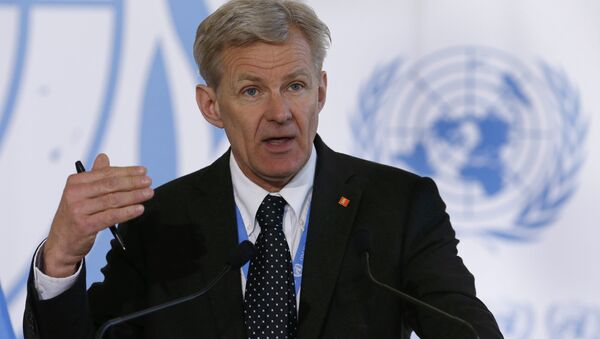"We have as a positive step gotten permits to go to 15 new hard-to-reach locations, and that includes a number of locations in the Aleppo area and the Homs area where needs have been growing and where people have not received relief for months," Egeland said.
Speaking after the 5th meeting of the UN task force on humanitarian matters of the International Syria Support Group (ISSG), Egeland added that the issue of medical supplies continued to be the "single most difficult issue in the humanitarian access work."
Moreover, Jan Egeland said that the UN humanitarian mission’s aim in Syria was to reach 1.1 million affected people before the end of next month.
"Altogether, the aim is to reach an impressive 1.1 million people before the end of April, including in the remaining hard-to-reach areas which are the six without any permission and Deir ez-Zor where we still work now," Egeland said after a UN humanitarian task force meeting.
Since the start of 2016, UN humanitarian convoys have been able to reach around 260,000 people in hard-to-reach and besieged areas in Syria, the adviser added.
The UN hopes for Russia to maintain its critical role in aiding UN humanitarian work in Syria.
"I hope that Russia will be as instrumental in helping our humanitarian access work in the future as it has been in the past…In many of the places where convoys had problems in getting through, Russia was among the countries that intervened and helped, enabled convoys to get through," Egeland said after the fifth meeting of the UN task force on humanitarian matters of the International Syria Support Group (ISSG).




